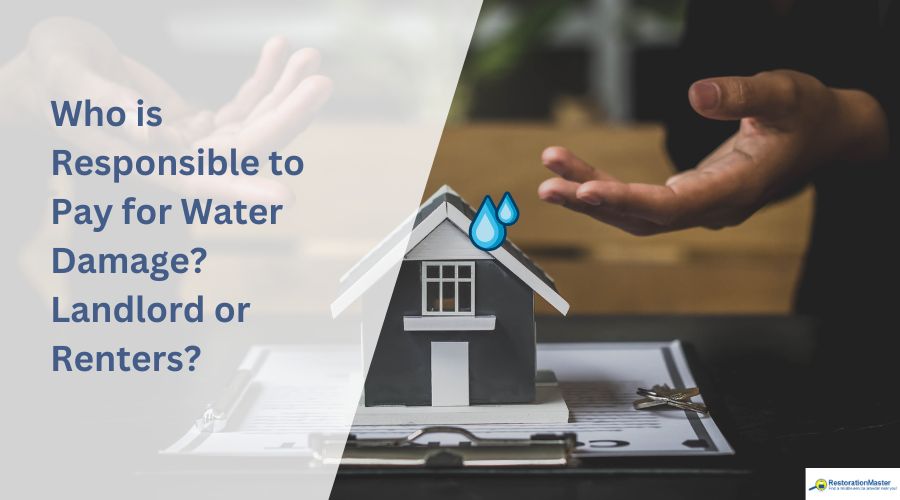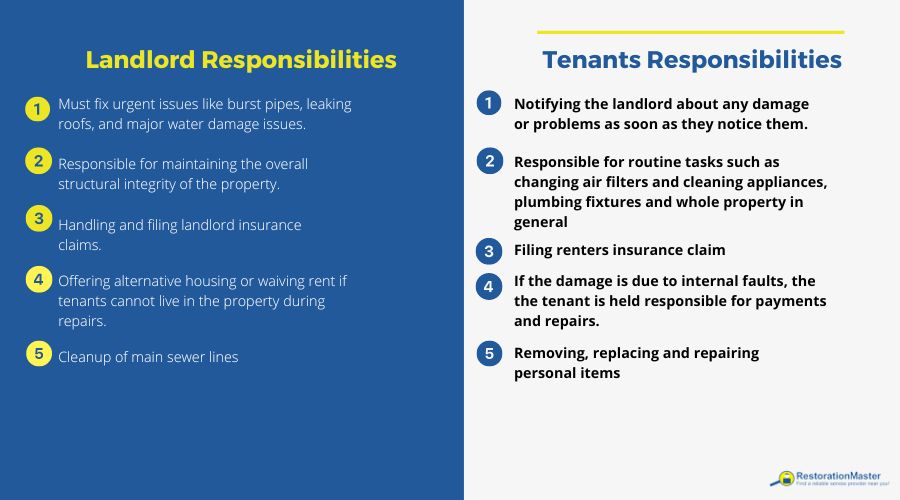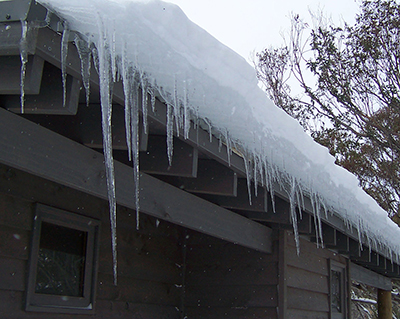Who’s Responsible for Water Damage: Tenants or Landlords?

Key Takeaways
- Tenants are accountable for water damage they cause through negligence, such as leaving faucets on or causing blockages.
- Landlords handle repairs for water damage resulting from structural issues, plumbing failures, or general wear and tear.
- Renters insurance typically covers personal property damage, while landlord insurance covers the property structureStructure refers to the framework or components of a buildin... More and related repairs.
- Always review your lease agreement for specific details on maintenanceMaintenance is the routine care, inspection, and repair of a... More responsibilities and damage repairRepair is the act of fixing or restoring damaged property, m... More procedures.
- Clear communication between tenants and landlords is essential.
Introduction
Water damage is a serious issue. There are times when repairing this damage can cost a fortune. It’s essential to understand what the responsibilities of tenants and landlords are in these cases.
When dealing with water damage, this is where both landlords and tenants can get confused. The question they face is: is it me who should pay for the damage?
In this article, you’ll learn about the responsibilities of landlords and tenants after water damage. These guidelines will help you make better sense of the situation. However, it’s always advisable to check legal principles specific to your state.
How Can you Spot Water Damage?
The signs of water damage aren’t always straightforward. Sometimes the damaged areas are in plain sight, at other times you need to be attentive in order to notice the subtle signs.
Here are some of the major signs of water damage:
- Surface changes. Do you notice any changes in your home’s surface textures? There’s a great chance that these might be related to water damage. For example, excess water may create bubbles, warps, and cracks in the damaged areas.
- Unexplained odors. Suddenly sensing strange smells in the rooms may indicate water-related issues. One of the typical outcomes of a water emergency is moldMold is a type of fungus that grows in damp or humid conditi... More growth. You may notice a moldy smell, especially after any porousPorous describes a material that contains small openings or ... More materials became soaked.
- Sometimes the water damage accumulates slowly over the course of days or weeks. Brown blotches and discolored areas may start to appear on the ceilings and walls. The brown color is the direct result of paint surfactants reacting with the intruding water.
- Is it unusually cold indoors? Damp walls continuously remove the heat, effectively lowering the ambient temperature. Any heating system will become less effective over time.
Surface texture changes, discolored areas, and strange odors are the main signs of water damage. Note that the first signs may be subtle. In many cases, the damage onsetOnset refers to the beginning or initial appearance of damag... More is slow, yet still degrades the materials and structures in the property.
What Is the Landlord’s Responsibility?
The landlord is required to provide a habitable living space. That’s why landlords hold responsibility when the water damage results from a lack of proper maintenanceMaintenance is the routine care, inspection, and repair of a... More.
Did burst pipes result in property damage? The tenant isn’t responsible here if the plumbing system needed repairRepair is the act of fixing or restoring damaged property, m... More or replacements prior to the water emergency. It was the landlord’s responsibility to take care of this issue before.
What is the Tenant’s Responsibility?
Tenants are held accountable for acts of negligence. Say a renter forgets to turn off the bathtub faucet, which results in floodingFlooding is the overflow or accumulation of water in areas t... More. It’s definitely not in the landlord’s domain of responsibilities.
Similarly, a tenant could be flushing food packaging or sanitary pads down the toilet. Sooner or later, this will create a water emergency. But the actions leading up to the damage mean it’s a neglectful behavior on the renter’s part.
Is it Really That Clear-Cut?
Definitely not. Take the case of a water emergency that results from the landlord’s failure to conduct the needed maintenanceMaintenance is the routine care, inspection, and repair of a... More. The tenant has to restrict the extent of the water damage. This means removing easily damaged items away from the water and taking all steps to stop the water intrusion.
A tenant has to notify the landlord in the shortest notice possible. Not taking a proactive approach during an emergency may limit reimbursement for personal item damage.
Overall, it isn’t important to focus on the type of water emergency when you determine responsibility. Depending on the water emergency’s underlying reason, you’ll be able to point out the accountable person.
How to Minimize Water Damage Disputes?
- Detailed contracts. Water damage is a frequent problem, which is exactly why your lease or rental agreement should cover this topic. Having clearly defined the responsibilities of both sides helps to reduce the frequency of costly disputes.
- Renter’s insurance. In some states, landlords can require their tenants to obtain renter’s insurance. Having a comprehensive insurance plan that covers water damage is a good way to balance the potential financial risks.
The Bottom Line: Tenants or Landlords Responsible for Water Damage?

The cost of dealing with water damage may result in major expenses. Depending on the circumstances, both personal belongings and parts of the rental property may get badly damaged.
While scenarios differ in details, the general guideline for water damage responsibility is this:
- Landlords are responsible if the water damage resulting from the lack of repairs and maintenanceMaintenance is the routine care, inspection, and repair of a... More. However, tenants have to take countermeasures for limiting the extent of the damage.
- Tenants hold responsibility in cases of negligence or erroneous judgment on their part.
Insurance Coverage For Both Renters and landlord
Here’s a breakdown of what renters insurance and landlord insurance typically cover:
Renter’s Insurance
- Personal Property: Covers damage or loss of personal belongings due to events like fire, theft, or water damage (from sources like burst pipes or overflow). It generally does not cover damage caused by floodingFlooding is the overflow or accumulation of water in areas t... More from outside sources.
- Liability Protection: Provides coverage if someone is injured in your rental unit and you are found legally responsible. It can also cover legal fees and medical expenses for injuries that occur on your property.
- Additional Living Expenses: Covers the cost of temporary housing and other expenses if your rental becomes uninhabitable due to a covered loss (e.g., fire or severe water damage).
Landlord Insurance
- Property StructureStructure refers to the framework or components of a buildin... More: Covers damage to the building’s structureStructure refers to the framework or components of a buildin... More and fixtures due to events like fire, storm damage, or vandalism.
- Liability Protection: Provides coverage for legal and medical expenses if a tenant or visitor is injured on the property and the landlord is found at fault.
- Loss of Rental Income: Covers lost rental income if the property becomes uninhabitable due to a covered event (e.g., major water damage or fire).
- Landlord’s Property: Can include coverage for appliances and furnishings provided by the landlord, such as built-in dishwashers or ceiling fans.
Help with Water Damage Restoration
Regardless of who’s responsible for paying the restorationRestoration is the process of returning a property to its pr... More costs, a restorationRestoration is the process of returning a property to its pr... More company must be contacted right away during a water emergency. Many local water damage restorationWater damage restoration is the professional process of clea... More providers are licensed, certified and available 24/7.
As soon as they arrive, they will extract any standing water, set up professional dryingDrying is the process of removing moisture from materials, s... More equipment and apply anti-microbials to prohibit potential moldMold is a type of fungus that grows in damp or humid conditi... More growth. This way the cleanup process is made efficient, effective and will prevent the spread of damage.
Don’t hesitate to contact your local water damage restoration service provider in the event of a water emergency in your building.












